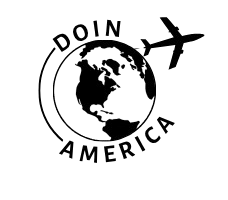Ecuador Inflation-Proof Budgeting: 7 Steps for Real Financial Strength
Ecuador has never truly been the land of price predictability. I’ll be completely honest—when I first started tracking my own expenses there, back in the early 2010s, I was floored. Prices for essentials could swing in a matter of weeks, and understanding how to adapt meant survival for anyone hoping to build a lasting life in the Andes or coastal cities. The classic “Just spend less than you earn” guidance is, frankly, bonkers—especially in a country with periodic inflation shocks and fluctuating US dollar purchasing power. Inflation in Ecuador is subtle but persistent: what seems stable for a few years can suddenly spike, and imported goods follow global price jumps like clockwork1.
After the 1999 banking crisis, Ecuador dollarized its economy in 2000. This solved a few inflation headaches, yet left Ecuadorians exposed to global dollar swings. Inflation quietly chips away at savings faster than most realize.
Nowadays, whether you’re a digital nomad landing in Quito, an expat relocating for retirement, or a local family managing month-to-month surprises, inflation-proof budgeting is absolutely crucial. But how do you do it authentically—without spreadsheets that feel pointless or advice that sounds half-baked?
Step 1: Know Ecuador’s Unique Inflation Patterns
The funny thing is, Ecuador’s inflation history looks tame compared to some Latin neighbors—but context matters. Since dollarization, the official inflation rate has hovered around 2-4% annually2. Yet real-world prices felt by Ecuadorians in groceries, rent, and healthcare can sometimes double in under a decade. Having witnessed local markets firsthand (and having bought more avocados than anyone ought to), I’ve learned that core items—rice, eggs, transport—can jump unexpectedly, often driven by supply chain hiccups rather than macroeconomic fundamentals.
Inflation can be local, not just national. Your Quito rent or Cuenca produce bill might climb while official inflation stays “low.” Always budget with your own cost-of-living data—not just the government average.
Price changes aren’t always dramatic—sometimes it’s the slow erosion of savings value that hits hardest. I remember a local friend, Sofía, telling me: “You never notice inflation until you try to buy the same thing twice.” That’s true—especially for imported tech or branded shoes in Guayaquil.
Inflation Timeline Table: Ecuador’s Price Trends (2000-2025)
| Año | Official CPI Inflation (%) | Typical Rent Increase (%) | Food Basket Rise (%) |
|---|---|---|---|
| 2000 | 96 | 25 | 30 |
| 2010 | 3.6 | 7 | 8 |
| 2020 | 0.8 | 5 | 4 |
| 2024 | 3.2 | 8 | 10 |
Take a beat, look at those numbers, and notice: Even with relatively low CPI, rental hikes and food costs are wild cards. I’m partial to this approach: treat inflation as a sneaky cost, not a headline number.
Step 2: Set Genuine Financial Goals That Adapt
I’ll be honest, the biggest mistake I made in my first Ecuadorian budgeting attempt was setting static, dollar-based goals (“Save $200/month”). I quickly realized that local costs don’t care about my goals—they adapt, so you have to as well. What strikes me is how local budgeting pros set goals relative to their real needs: “Save enough for 4 months’ rent” or “Cover school fees for two children regardless of cost hikes.” That’s way, way smarter than dollar-value targets in an inflation-ridden context.
- Define your “real needs”: Start with shelter, food, healthcare, education.
- Set goals in quantities (months of coverage, bags of rice), not just dollars.
- Review and revise goals every 2-3 months based on price changes.
Personal opinion: It’s far easier to track “two months’ food” than $300 budget for groceries—because $300 may not buy the same groceries next quarter. Honestly, I reckon this method keeps you honest with yourself in a country where price tags are slippery.
Money goals in Ecuador must evolve constantly. Don’t feel bad if you need to adjust every few months—that’s a sign of strong budgeting, not failure.
Step 3: Track Expenses—But Like a Local
Tracking expenses in Ecuador is a different beast. It’s not just about jotting down numbers; it’s about learning the rhythms of your own market. During my second year living in Guayaquil, my receipts started feeling meaningless—prices for vegetables changed every week, and cab fares would leap during rainstorms. What I should have noticed earlier: expense tracking needs to be responsive, not rigid.
- Record daily outlays—don’t wait for month-end summaries.
- Note “surprise” costs: school supply drives, family events, sudden medical bills.
- Group expenses by local context: market, supermarket, pharmacy, online.
- Use mobile-friendly tools or manual notebooks as suits your style.
From my perspective, the most effective local budgeters are those who adapt spontaneously—a cab ride costing $1.50 last week might be $2.25 tomorrow. The more I consider this, the more I realise the futility of trying to “average out” expenses in inflationary settings. Actually, let me clarify: you can use weekly tracking but always be prepared for anomalies.
“Budget with your feet.” Visit markets, track visible prices, ask sellers about upcoming changes.
Ever notice how local budgeting always feels a bit improvisational? That’s a feature, not a bug—flexibility is your greatest ally.
Step 4: Prioritize Needs Over Wants—Find the Hidden Essentials
Here’s what gets me: in Ecuador, “essential” often means more than food and rent. For rural families, it’s reliable Wi-Fi for education; for city dwellers, fuel costs can be make-or-break. When inflation bites, non-essentials get trimmed fast—but even essentials evolve. Don’t let Instagram feed (or travel blogs, ha!) dictate what’s “necessary”. Talk to locals. Adjust constantly.
- List your absolute must-haves: rent, food basics, healthcare, school expenses.
- Identify “hidden essentials”: transport, digital access, emergency supplies.
- Trim wants when inflation spikes—revisit subscription services, non-core outings.
- Plan for “seasonal essentials”: rainy-season repairs, holiday travel.
Moving on—don’t silo your priorities. One month, internet may be vital for remote work; another, home maintenance rules everything after a big storm.
Step 5: Integrate Locally-Proofed Earning & Saving Hacks
I have to say, earning and saving in Ecuador means working smarter, not just harder. The most successful budgets I’ve seen always include side gigs—teaching, transport, online freelancing—plus “true savings” in local cooperativas that aren’t always obvious to outsiders.
Many Ecuadorians save at local credit unions (cooperativas), which often offer better rates and community support than big banks. These savings options can buffer against inflation, but it’s wise to check for regulatory protections before investing.
| Earning Hack | Typical Savings ($/month) | Real Inflation Resistance |
|---|---|---|
| Freelance English Classes | 60-150 | Moderate (demand constant) |
| Market Arbitrage (Buy/Sell) | 40-100 | Variable (local price spikes) |
| Public Transport Side Jobs | 30-70 | Low (fuel cost volatility) |
| Digital Freelancing | 100-250 | High (detached from local prices) |
Plus, there’s this: investing in durable goods, like bulk rice or quality school shoes, often beats saving cash—which can lose value quietly. I’ll be candid: I used to scoff at bulk-buying, but now I watch for warehouse deals and seasonal price dips.
Combine digital income streams with smart local purchases. Diversification is not a luxury—it’s a survival strategy.
At the same time, don’t neglect community-based savings—family pools, neighborhood lending cycles. Many Ecuadorians rely on informal lending networks that have stood the test of inflation and currency swings for decades3. Used carefully, these can be lifelines during cost surges.

Step 6: Monitor & Adjust for Inflation Each Month
Here’s where budgeting in Ecuador gets truly dynamic—you have to monitor inflation monthly, sometimes weekly. Sound familiar? I know, I know—people say “review your budget monthly” everywhere, but in Ecuador, you really have to. Not because a guru said so, but because prices genuinely change that fast. The Central Bank and INEC report monthly inflation statistics4, but again, what strikes me is that personal inflation (your own cost basket) can move differently.
- Review your core expenses monthly: rent, food, utilities, school fees.
- Compare local market prices, not just official data.
- Adjust savings goals and spending categories dynamically.
- Watch for seasonal spikes—school start, holidays, weather changes.
Honestly, what really strikes me is how Ecuadorians learn to “live with inflation” but not let it take control. Ever tried planning a vacation with a fixed budget, only to have bus fares jump 20% after a presidential election? I have—twice. Nowadays, I always pad the transportation budget, “just in case.”
Inflation Checklist: Monthly Review Process
- Gather receipts, bank statements, mobile expense records.
- List all essential outlays in both USD and approximate “real cost.”
- Check INEC or market price data for food/rent.
- Reallocate budget if categories have shifted more than 5% higher.
- Update savings targets based on new price trends.
INEC’s monthly inflation bulletin is available online and at municipal offices. Ecuadorian budgeting workshops often use this report to anchor family budgets.
Step 7: Build an Emergency Buffer the Ecuadorian Way
Emergency funds in Ecuador look a bit different than the classic “six months’ expenses” mantra. Ask three Ecuadorians how they prepare, and you’ll hear about cash stashed at home, family loan networks, and medical insurance as backups. To be honest, the best buffers include a mix: cash, goods, insurance, and relationships.
- Keep emergency cash (under $500) in a trusted place—don’t depend solely on ATMs.
- Maintain key contacts for family lending and neighborhood support.
- Invest in medical insurance—emergencies in Ecuador quickly turn financial.
- Stock up on durable goods—rice, canned food, medicine for price spikes.
Three years ago, before a massive fuel hike hit, my neighbor Rosa told me: “We don’t just save money, we save what we need.” That stuck with me—especially when a local pharmacy ran out of essentials after prices spiked. Let me step back: Your emergency buffer should be whatever lets you sleep well at night, not just what a YouTube influencer says.
Diversify emergency resources—money, goods, support networks. It’s about resilience, not just savings.
Common Questions About Inflation & Budgeting
- Can I rely on USD to protect my savings?
Only to a degree. Ecuador’s dollarized economy insulates against runaway hyperinflation, but imported goods still rise with global trends5. - Are local credit unions safer than banks?
Most are well-regulated, but always verify government supervision (Superintendencia de Bancos)6. - What budgeting app works best in Ecuador?
Honestly, manual notebooks or customizable apps (like Monefy, AndroMoney) seem to suit locals better than international ones. Adapt to local currency quirks and odd expense categories.
Pause here and think about: Are your current budgeting habits inflation-proof—or just “budget-friendly”? The difference matters more in Ecuador than almost anywhere else I’ve lived.
Recommended Tools, Resources & Reference Links
- INEC monthly inflation bulletin
- Superintendencia de Bancos supervision list
- Customizable budgeting apps (Monefy, AndroMoney)
- Local cooperativa listings
- World Bank economic reports on Ecuador
- Family finance workshops in Quito or Cuenca
Conclusion: Building True Financial Strength in Ecuador
I’ll be completely honest—budgeting in Ecuador is part science, part social art, and part monthly improvisation act. What my experience (with dozens of local families, remote workers, and retirees) has taught me is that the strongest budgets are alive—they flex, breathe, and adapt. You can absolutely build an inflation-proof personal budgeting habit in Ecuador, but you must accept uncertainty and learn to adjust often. Let me clarify: That’s not weakness, that’s pure strength. Real resilience comes not from rigid numbers or trendy apps, but from knowing your essentials, tracking contextually, and engaging with your local community for support and advice. In my opinion, that’s budgeting wisdom everywhere—but especially under the volcanoes and city lights of Ecuador.
Start local—walk your neighborhood, ask for typical price changes, begin adapting your budget monthly. Connect with credit unions and community groups. Budget not just for today’s bills—but for tomorrow’s uncertainties.
Before we go further—don’t wait for “perfect” stability to get started. Ecuador shows us that inflation-proof budgeting is a journey, not a destination. Revise, review, and always personalize your habits. I need to revise my earlier point: Flexibility isn’t just handy, it’s absolutamente crucial for financial health in Ecuador.
Referencias



